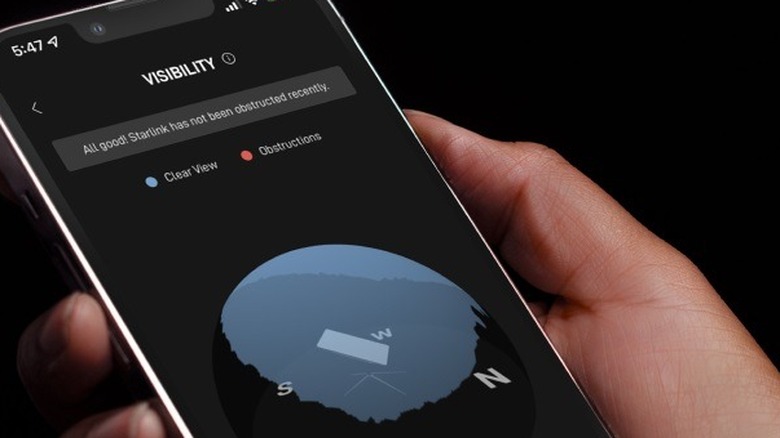Elon Musk's Latest Milestone Says Something About Starlink's Momentum
Elon Musk has revealed that Starlink just crossed the notable milestone of manufacturing over a million Starlink terminals, the SpaceX project that offers broadband access courtesy of satellites floating in Low-Earth Orbit (LEO). Musk's news comes at a challenging time for the company, with expansion plans as part of his ambitions of dominating the entire satellite internet industry have collided with government contracting issues and headaches around funding.
SpaceX recently got the US FCC nod to deploy no less than 40,000 satellites in orbit, far more than existing rivals like OneWeb as well as cash-rich upstarts like the Jeff Bezos-backed Project Kuiper that are yet to leave a mark on the industry. Starting off as a proposal all the way back in 2015, with an initial plan of injecting approximately 4,000 internet-beaming satellites into orbit, the first two Starlink test satellites – dubbed TinTin A and TinTin B – blasted off in 2018. Commercial deployment followed shortly after, with a cache of 60 Starlink satellites being launched via SpaceX's own Falcon 9 rocket in 2019.
It was only in November 2021, though, that Starlink finally came out of the beta testing phase, smack dab in the middle of a global semiconductor shortage which also slowed down the service's expansion. Available in two tiers — Standard and High Performance — the initial setup cost is $599, while an additional monthly fee of $110 is levied for accessing the internet. But the journey for SpaceX and Starlink has been far from smooth.
A challenging journey
The US FCC initially approved SpaceX's proposal to deploy a million satellite internet terminals in the U.S. in March 2020. The same year, SpaceX asked the agency to extend the licensing limit so that Starlink could scale to serve 5 million customers in the United States. The high cost, though, still remains a hurdle from an accessibility standpoint, and of course Starlink needs clear skies which could lead to patchy connectivity in areas that face frequent extreme weather. Overheating has also been highlighted as a lingering issue over the years, as SpaceX iterates on its terminal design.
That process is costly but essential: SpaceX's initial designs actually ended up costing the company considerably more than it could sell them for. In addition to the bigger fees from the High Performance service tier, SpaceX has also been seeking out new government funding, albeit with mixed results. Though shortlisted for a U.S. contract worth about $886 million, to provide internet services in rural areas, the FCC rejected the proposal over concerns that Starlink couldn't actually deliver what SpaceX was promising.
In its dismissal, the FCC classified Starlink as a technology that is still in its development stage, and argued the company couldn't live up to its promise of providing reliable, high-speed internet during its testing. SpaceX has since gained support of FCC Commissioner Brendan Carr over the expensive rejection. On the flip side, there's continuing outcry from the astronomy community, which has claimed that ever-growing Starlink constellation increases collision risk and obscures the view of satellites, both visible and in the radio region. Plus, hackers are now increasingly seeing Starlink as an intriguing target, while space debris concerns are mounting, too.
Ambitions beyond obstacles
Despite those headaches, neither Musk nor SpaceX are tempering their ambitions for the system. Starlink may have started off as an installation for rooftops, but in July this year the company got regulatory approval for mounting Starlink terminals on moving cars, boats, and planes. A week after it got permission, SpaceX announced Starlink Maritime, a new tier of it services targeted at clients like "merchant vessels to oil rigs to premium yachts."
The price of Starlink's oceanic internet service is set at $5,000 per month, while the gear itself costs an additional $10,000. While that may sound excessive, Starlink Maritime's services are actually highly competitive, compared to established rivals like Sea Tel and Iridium Go. By the end of Q1 2023, Starlink Maritime aims to go global, with internet service regardless of where you sail.
Back on dry land, Starlink recently partnered with T-Mobile to offer limited satellite connectivity to phones normally using the Magenta carrier's network, with the goal of assisting users in emergency scenarios when they are out of coverage in remote regions. Arguably the most exciting part there is that satellite connectivity will be offered free of cost, rather than the expensive subscription we've seen traditional satellite phone providers charge. SpaceX even plans to offer Starlink's internet connectivity on school buses that cover a route longer than 60 minutes, in rural areas where students don't necessarily have access to fast broadband internet services at home.


